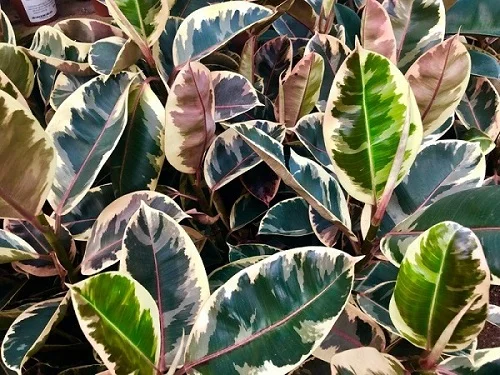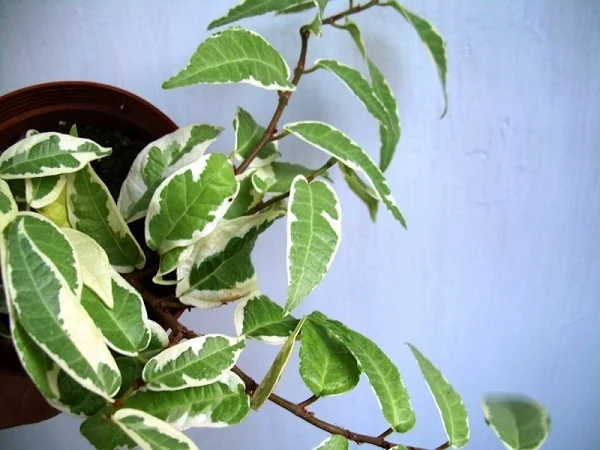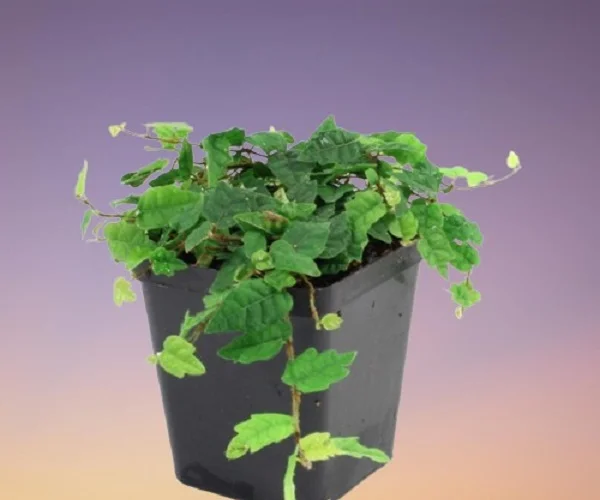Creeping Fig (Ficus pumila) Indoor Care, Common Problems and Remedies
Some links in this post may be affiliate links
Creeping Fig (Ficus pumila) prefers medium to bright indrect light, average warmth, humid conditions and consistently moist, fertile, well-drained soils coupled with monthly feeding in the growing season.
Ficus pumila easily adapts to indoor growing conditions. In this guide, we will explore the best practices for growing this plant indoors, including propagation and solutions to common problems. First, we look at some characteristics of the plant.
Creeping Fig also called Climbing Fig is one of the lowly Ficus varieties and grows as a trailer or a climber, producing a dense green carpet making it one of the best indoor ground covers.
The stems in Climbing Fig will cling to any damp surface and can climb up to a height of 4 metres. Its aerial roots produce a translucent latex that hardens on drying, allowing the plant to adhere to their support.
Ficus pumila has a high humidity requirement, this coupled with its compact size make it perfect for a terrarium. The long trailing stems are ideal for a hanging basket, a tabletop or a shelf. It is one of the best plants for a hanging basket.
The plant bears numerous, tiny, oval-shaped leaves with opposite veins. The Latin name "pumila" comes from the word "pumilus" meaning dwarf which refers to the very small leaves.

Botanical name: Ficus pumila
Synonym: Ficus repens
Family: Moraceae
Common names: Creeping Fig, Climbing Fig
Origin
Ficus pumila also called Ficus repens is native to East Asia (China, Japan and Vietnam).
Disadvantages of Creeping Figs?
The main disadvantages of Creeping Fig are in its invasive growth habit. If not maintained and its growth contained it will cover structures and landscape features. As it climbs on buildings and wooden structures, the woody tendrils can cling or root in and damage structures and or their surfaces.
Varieties and Cultivars
Ficus pumila comes in many varieties like Ficus pumila 'Minima' which has smaller leaves and Ficus pumila 'Variegata' has heart-shaped, thumbnail-sized leaves with broad white margins on wiry stems among others.
The popular cultivars are:
Ficus pumila var. awkeotsang (Awkeotsang Creeping Fig)
Ficus pumila var. quercifolia (Oak Leaf Creeping Fig or Miniature Oakleaf Fig).
Ficus pumila 'Curly' (Curly Creeping Fig or Crinkled Leaf Form) has green leaves with a cream center and crinkled leaves.
Is Creeping Fig poisonous?
As stated by Wikipedia, like other plants in the Moraceae family, the Ficus pumila sap may cause a skin inflammation in sensitive skin. Always wear gloves when handling this plant.
Where to Buy
Are you looking to add this creeper to your plant collection? Creeping Fig is available online on Etsy (Link to Etsy).
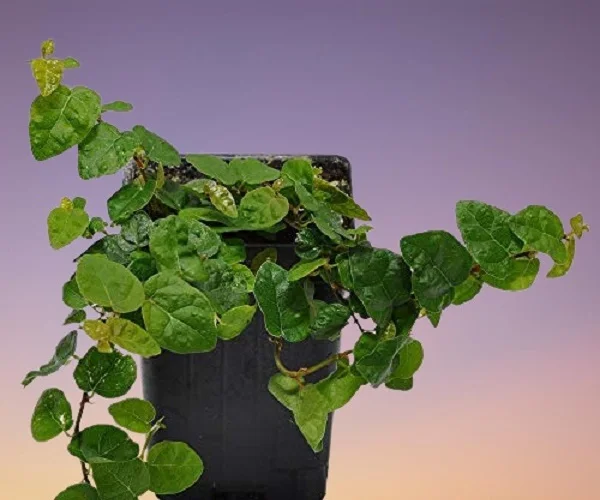
How to Care for Ficus pumila Indoors
Care for Ficus pumila pertains to giving it medium to bright indrect light (filtered light), average warmth of 16-280C, humidity of 60-70% and consistently moist, rich, well-drained soils coupled with monthly feeding in the growing season.
Creeping Fig care requires regular pruning to keep it neat and also encourage a bushy growth. Repotting is only needed when it becomes pot-bound. Keep reading for more on these growing conditions and how to achieve them.
Water Requirements
How often should I water a Creeping Fig?
Do not water your Creeping Fig on a schedule to avoid either overwatering or underwatering, both of which are detrimental to the growth of the plant.
Water your Creeping Fig liberally during the growing season (spring and summer) and allow the top 1-2 inches of soil to dry out between waterings to keep the soil moist.
Significantly decrease watering in the cold season (fall and winter) to maintain the soil slightly moist. However, do not allow the soil to dry out completely to avoid wilting and leaf drop.
Avoid overwatering and soggy soil as they can result in root-rot and eventual death of the plant; make sure that the pot has a drainage hole and the soil is well-draining.
Light Requirements
Where do you put Creeping Figs?
Put your Creeping Figs a few feet from a large, brightly-lit window as it thrives in medium to bright indirect light. Keep it away from direct sunlight as it can scorch the leaves resulting in dry shrivelled leaves.
If the lighting is not adequate, Ficus pumila will respond with leggy growth and sparse foliage. Move it to a brighter place or use a grow light to supplement the light.
Rotate the pot regularly to ensure that the plant receives light on all sides for even growth and avoid leggy growth.
Outdoors, place your Creeping Fig in a shaded place. Though it can adapt to morning or late afternoon sunlight it needs to be acclimated gradually. Keep it away from midday hot sunshine to avoid scorching.
Temperature and Humidity
Creeping Fig flourishes in an average warmth of 16-280C. Keep it away from drafts to prevent sudden changes in temperature which can lead to slow growth and leaf drop.
Ficus pumila grows best in a high humidity of 60-70%. Dry air can result in wilting and dry leaf tips. To up humidity, set the pot on a wet pebble tray, use a humidifier or grow the plant in a well-lit bathroom and other moist areas in the home. Maintain good airflow for your plant to prevent fungal diseases.
You may also grow the plant in a closed terrarium as a high humidity can be maintained inside a terrarium.
Potting Mix
The best soil for Creeping Fig should be well-draining, nutrient-rich soil to prevent root rot. A mix of 50% potting soil, 30% peat moss or coco coir, and 20% perlite or sand is ideal for the plant.
Fertilizer
What is the best fertilizer for Creeping Figs?
Feed your Creeping Fig with a balanced, water-soluble fertilizer monthly during the growing period (spring and summer) to promote a lush growth. Avoid too much fertilizer as it can result in leggy growth.
Stop feeding in the cold season (fall and winter) as growth is minimal and feeding at this time can lead to fertilizer burn; browning and dry leaf tips.
Repotting
Repot your Creeping Fig at the beginning of the growing season only when it has become pot-bound. Avoid frequent repotting as it prefers to be pot-bound; repot only when the plant has outgrown its current pot and the roots begin to grow through the drainage hole.
Use a pot 1 size larger than the current one and one that has a drainage hole to avoid getting soggy soil. Never allow the roots of the to sit in soggy soil as it may lead to leaf drop and root-rot. Check out these pots with drainage holes on Amazon.
Pruning & Grooming
Pruning Creeping Fig involves:
- Removal of dead and yellow leaves to maintain the plant neat and minimize pests and diseases.
- Pinch off the growing tips regularly to encourage a compact and bushy growth.
- Cutback the stems if they become unruly to rejuvenate growth. You may use foliage emanating from the pruning to propagate new plants.
Occasionally clean the leaves by washing them under a steady stream of water from a hose to get rid of dust and discourage pest infestation.
Ficus pumila Propagation
Will Ficus pumila grow from cuttings?
Ficus pumila (Creeping Fig) can be propagated from stem cuttings, by air layering or plant division at the beginning of the growing season (spring or early summer) when the plant is actively growing to hasten establishment.
Learn how to propagate Ficus pumila (Creeping Fig) by 4 easy methods.
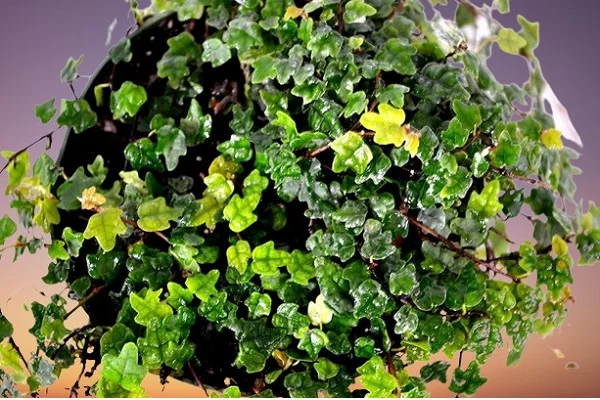
Ficus pumila Problems & Solutions
Creeping Fig (Ficus pumila) problems include plant dying, yellowing leaves, dropping leaves, dry shrivelled leaves, pests and diseases among others. Keep reading for more on these problems and how to fix them.
Plant dying
Why is my Creeping Fig dying?
Your Creeping Fig is dying due to overwatering, underwatering, poor feeding, direct sunlight, drafts, low humidity, little light, poor quality soil, root-rot, and pests among others.
Check out these 10 Reasons why Creeping Fig is Dying and How to Revive It.
Yellowing leaves
Why is my Creeping Fig turning yellow?
Some of the causes of yellow leaves on your Creeping Fig are soggy soil, overwatering, underwatering, nutrients deficiency, and drafts.
How to fix it
Soggy soil: Ensure that the pot has a drainage hole and the soil drains easily.
Overwatering: Do not water on a schedule. Wait until the top 1-2 inches of soil dry out before watering again.
Underwatering: Do not laeve the soil to dry out completely for long. Keep it consistently moist.
Nutrients deficiency: Feeding monthly from spring through summer with a balanced, water-soluble fertilizer is recommended.
Drafts: Place the plant away from drafts to maintain a warmth of 16-280C.
Leaf drop
Why is my Creeping Fig drooping leaves?
Dropping leaves in your Creeping Fig is caused by soggy soil, temperature stress, low light, underfeeding, and age.
How to fix it
Soggy soil: Use a pot with a drainage hole and free-draining soil.
Temperature stress: Keep the plant away from drafts (windy doors, drafty windows, air conditioning units, heat sources among other).
Low light: Move the plant to a brighter spot or instal a grow light if the natural lighting is not sufficient.
Underfeeding: Feed monthly in spring and summer. Do not feed in fall and winter.
Age or maturity: As the plant matures, it loses the lower leaves.
Dry and shrivelled leaves
Why is my Creeping Fig drying out?
Dry and shrivelled leaves in Creeping Fig are due to direct sunlight, low humidity, and underwatering.
How to fix it
Direct sunlight: Keep the plant away from direct sunlight or instal a light curtain or sheer to filter the sunlight.
Low humidity: Set the pot on a wet pebble tray, use a humidifier or grow the plant in a well-lit bathroom.
Underwatering: Water when the top 1-2 inches of soil dry. Never allow the soil to dry out completely.
Pests
Common pests in Creeping Fig are aphids, mealybugs, scales and spider mites. Isolate the affected plant to prevent spread to other plants and treat it with neem oil or insecticidal soap. Take care to follow the instructions on the label.
Conclusion
Creeping Fig (Ficus pumila) is a beautiful, fast-growing plant that thrives in bright light, consistent moisture, and high humidity. With proper pruning and occasional propagation, it can add lush greenery to any indoor space. By following these care tips and troubleshooting solutions, your plant will stay healthy and vibrant for many years.
Frequently Asked Questions
1. Can Ficus pumila tolerate low light?
Ficus pumila can survive in low light but grows best in bright indirect light. Low light may cause leggy growth.
2. How do I make my Creeping Fig grow bushier?
You can make your Creeping Fig bushier by regular pruning and pinching to encourage compact, dense foliage.
3. Can Creeping Figs be in direct sunlight?
Creeping Figs can adapt to morning or late afternoon sunlight but they need to be acclimated gradually. Midday hot sunshine may scorch the leaves.
4. Is Creeping Fig toxic to pets?
Yes, Creeping Fig is mildly toxic to pets. Keep it away from cats and dogs.
5. Why is my Creeping Fig not growing?
Your Creeping Fig is not growing due to underwatering, too little, pests infestations, underfeeding and temperature stress.
You liked it? Share on social media.
Related Content
Amazon Associates Disclosure
Homeplantsguide.com is a participant in the Amazon Services LLC Associates Program, an affiliate advertising program designed to provide a means for sites to earn advertising fees by advertising and linking to amazon.com.



